Cast Iron cookware is absolutely essential when it comes to cooking outdoors over a fire. Most household cookware available now will not work well over the volatile and harsh conditions a fire produces, and at the very least will not be suitable for the stove again afterwards.
From soot, extreme temperatures and direct contact with fire and flame, cooking equipment can take quite a beating. This is why cast iron is ideal for this setting. If taken care of properly, cast iron is very durable and can last a lifetime.
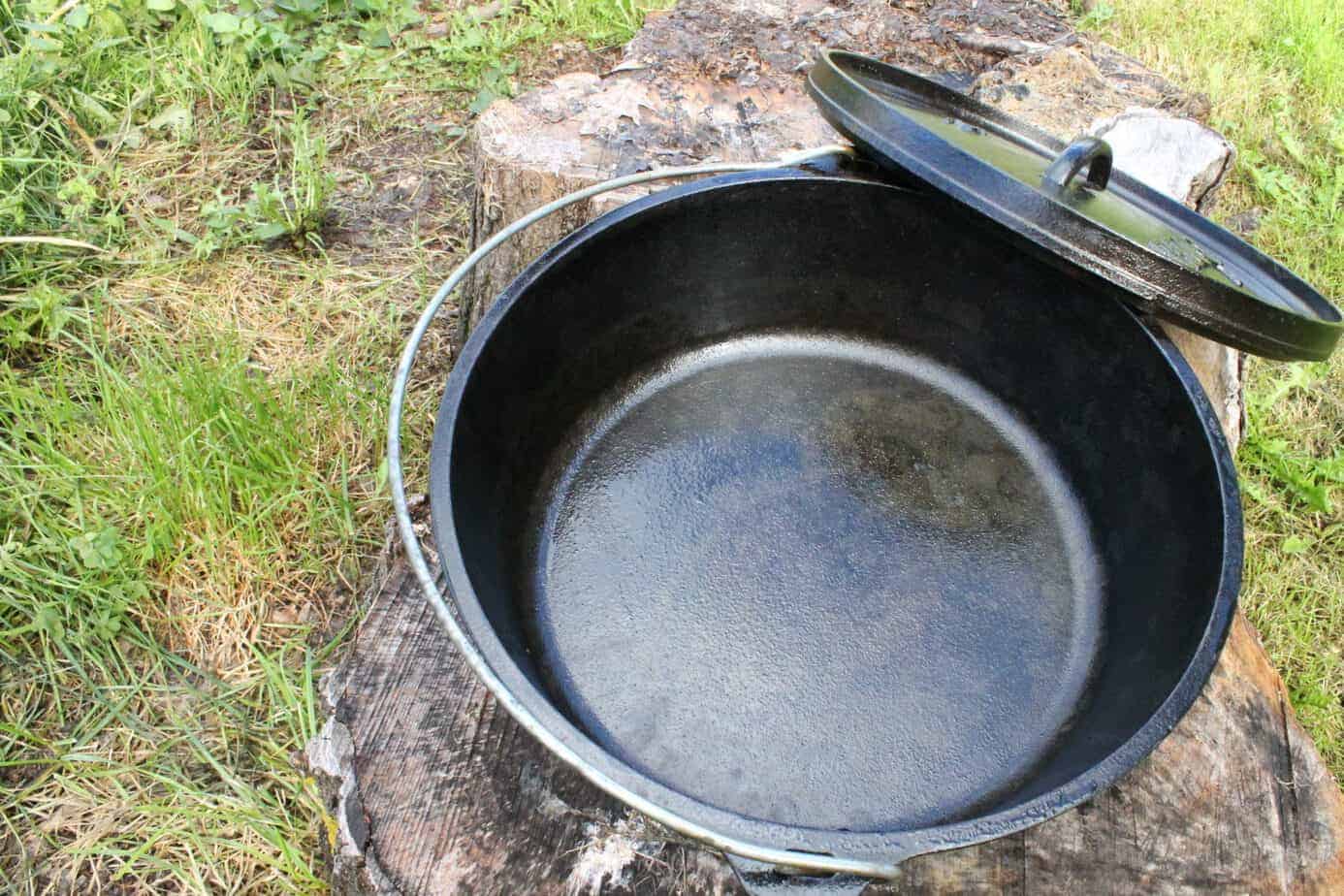
The thickness of the material itself is perfect for conducting and distributing heat uniformly, holding the heat in and staying hot for long periods of time after the fire has burned down. From cast iron frying pans, dutch oven stoves and grilling grates, there is a wide selection of cast iron cookware available now. In this post you'll learn how to clean and season cast iron cookware at home!
What To look For When Purchasing Cast Iron Cookware
When purchasing or thinking about purchasing cast iron cookware, it is important to keep a few things in mind. In regards to the brand of cast iron, we recommend Lodge Cast Iron (affiliate link), as they produce excellent quality products that will last you a lifetime.
First off, cast iron is heavy. If you are going camping with it make sure to account for that extra weight. This also makes it very durable though and dropping it on a rock is unlikely to dent or majorly scratch it.
Cast iron pots and pans will also heat to very high temperatures and stay that hot for extended periods of time. This means that if your pot or pan has a cast iron handle, you will need a thick glove, dry towel or other tool, to lift and move the pan or pot around.
Caring For Cast Iron
Finally, cast iron pots should not be washed with soap or placed in a dishwasher. They need to be washed by hand after every use with warm water and then "seasoned", a process of coating the metal surface with oil at high temperatures to create a moisture and stick proof barrier.
If you properly take care of your cast iron, and are willing to put in the extra effort to keep it cleaned and seasoned, you will be rewarded with a piece if culinary equipment that will last you a long long time.
So How Do You Clean & Season Cast Iron Cookware?
So how do you properly wash and season cast iron cookware!? It's actually really simple and if you make sure to follow these steps after using the pot you won't run into any problems.
I recently made a big batch of Potato Bacon Corn Chowder and thought it would be a great chance to show how you should clean these types of pots after use. Because I wasn't able to clean the pot right after use, the pot got quite grungy and started to rust a little as the moisture evaporated. This is by no means ideal, and I would never recommend letting your pot sit for 2 days dirty after using it, but it provided me a great opportunity to show how even the dirtiest pot can be cleaned with these steps.
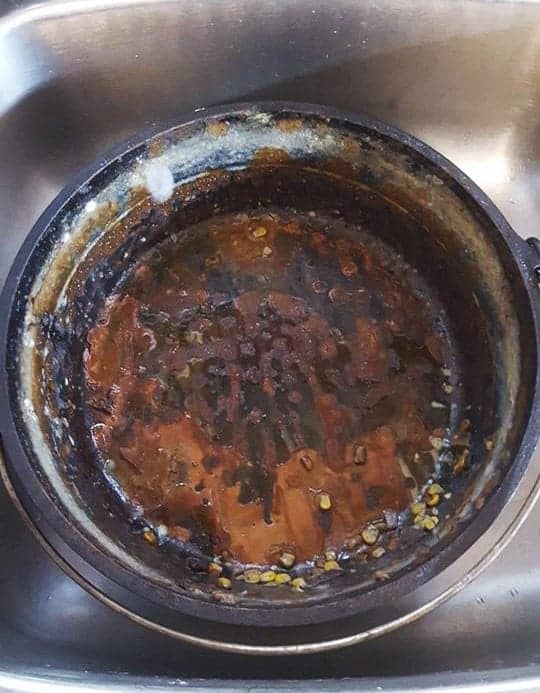
Remove Caked On Grime & Rust First
- Start by using clean water to rinse out the pot or pan and wash away any leftover bits of food that may be leftover from cooking.
- Cut a potato in half, sprinkle coarse sea salt into the pan, and using the cut side of the potato scrub every inch of the pot. The salt will draw out the moisture in the potato creating a slurry of sorts, that will help scrub, rust, cooked on bits of food and anything "not cast iron" off the surface. The coarseness of the salt will also help scrub off stubborn bits that may be burnt on.
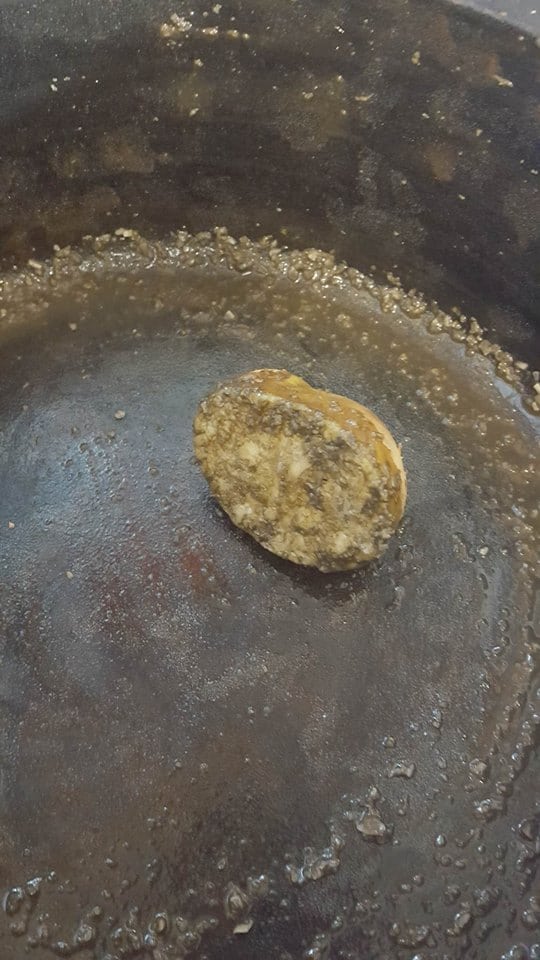
Seasoning The Cast Iron Surface
- Rinse the salt and potato slurry of the pot with clean water. If there are still dirty sections repeat the above steps..
- Dry the cast iron with a towel until completely dry.
- Brush every single cast iron surface with oil, canola works well, though you may use any kind of fat or grease, oils with a high smoking point such as coconut oil and canola oil work best.
- Place the cast iron pot or pan upside down in a pre-heated 300F oven for at least 1 hour. Place a drip tray or aluminum foil under the pot to catch any grease drippings. After at least an hour, turn off the oven and let the pot cool until you can remove it with your bare hands.
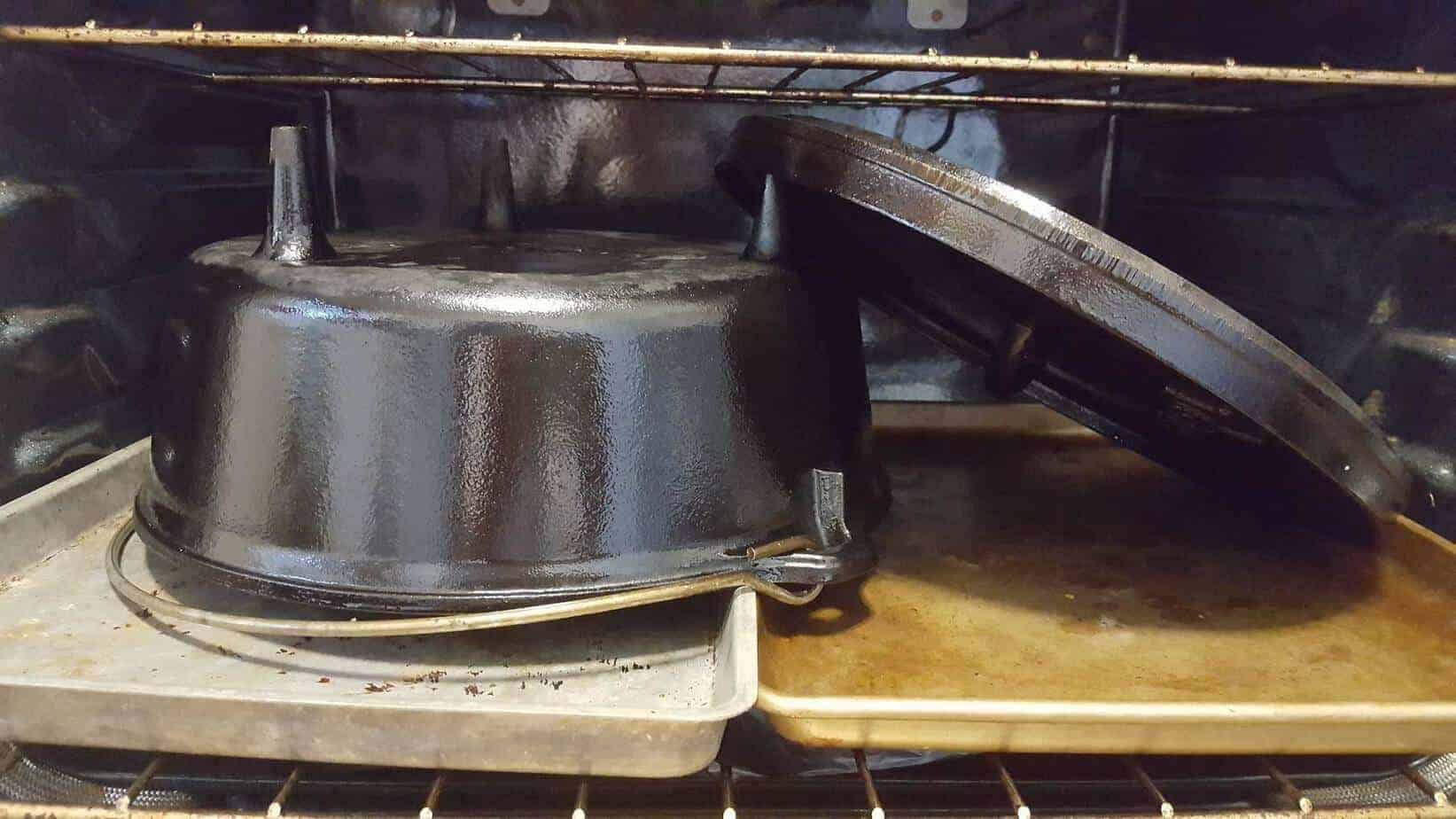
At this point, you will notice the pot or pan has a shiny new "layer" on the surface of it. This is the polymerized layer of oil which you just baked on in the oven! This polymerization occurs when the oil or fat is heated to a high temperature and begins to break down.
The resulting surface is what creates the waterproof and stick proof layer in your pot. After repeated use, this layer will begin to degrade which is why it is important to re- season the pan after each use to ensure a nice, even, non-stick coating!

After using your freshly seasoned pot or pan, all that is required to clean it is to rinse it in clean water and wipe it with a cloth. Using soap will break down this non stick layer, which is why it is recommended not to use soap to wash the used pot. If you find that food starts to stick to the cast iron again or it looks like the cast iron has "bare spots" you can re-season it again. Regular steel pots and pans can also be seasoned.
The cooking surface of regular steel pots and pans can be seasoned in much the same way. Instead of baking the whole thing in the oven though, you simply heat oil in the pot or pan on a stove for an extended period of time. This seasons just the cooking surface.
As always if you found this post helpful or have any questions for me, leave them in the comments or on our Facebook Page!

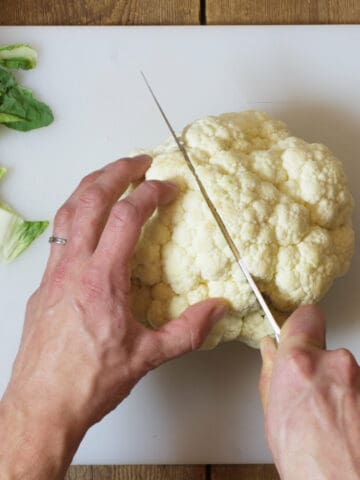
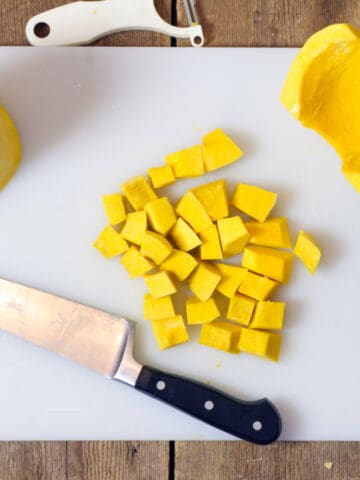
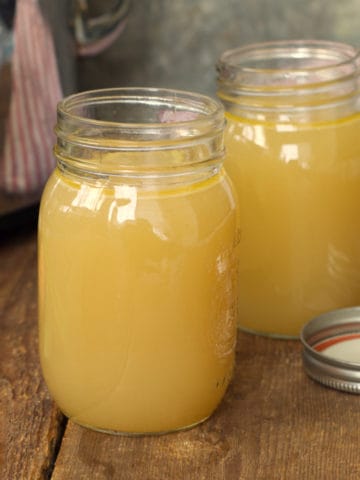
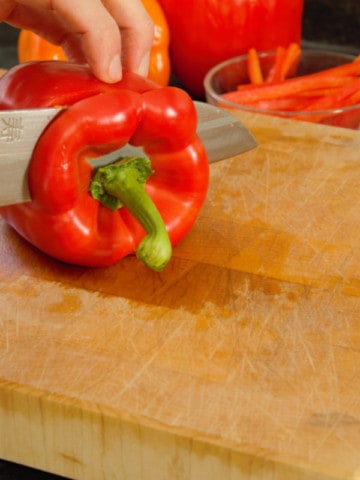
Bernice Hill
Great tips! I've never heard of using the potato. Now...how did you season the pot in the first place? I recently tried and failed to season a new carbon steel wok. I get conflicting comments that I should 1) start from scratch and re do it and 2)Just keep on seasoning it and eventually it will get there. I used some videos on youtube but they didn't work out for me.
Markus Mueller
Bernice if the wok is brand new it will most likely come pre-seasoned. If you use it and it seems none stick you are likely good to go..if it has some kind of coating like Teflon this method will not work as the high heat will break down the Teflon.
If things start sticking to the pan after the first one or two uses..wash the pan till it's clean and then over a medium heat, heat oil in it making sure all cooking surfaces are coated with oil. Swish the pan occasionally to keep the sides of the wok coated You will need to be careful the oil does not catch fire spontaneously. You will want to heat the oil in the pan for atleast 20 to 30 minutes on the stove top.
And finally as always when using any kind of pan on the stove make sure the pan is hot and the oil smoking hot before adding food..over time this process of heating the oil before adding your food will slowly build a seasoned surface.
Kristy @ She Eats
Oh Markus - thanks for the refresher! Sometimes I get lazy and use soap (eek) on my cast iron pans and I appreciate the tips. Always great 🙂
Julia
When we grew up, we only had cast iron pots and pans in the house. After cleaning them for years, I vowed that I would never EVER own one! Guess what? I have one, only one, and I love it! I am looking into getting more as they are fantastic. Great post, thanks for sharing all your tips!
Tiffany Mayer
I like that you are one of the few not afraid of using water on your cast iron. I always use a bit of soap, despite conventional wisdom. I just have to season more often but as a bacteria-phobe, it puts my mind at ease and helps eliminate some of the strong flavours in a skillet that might "contaminate" another dish.